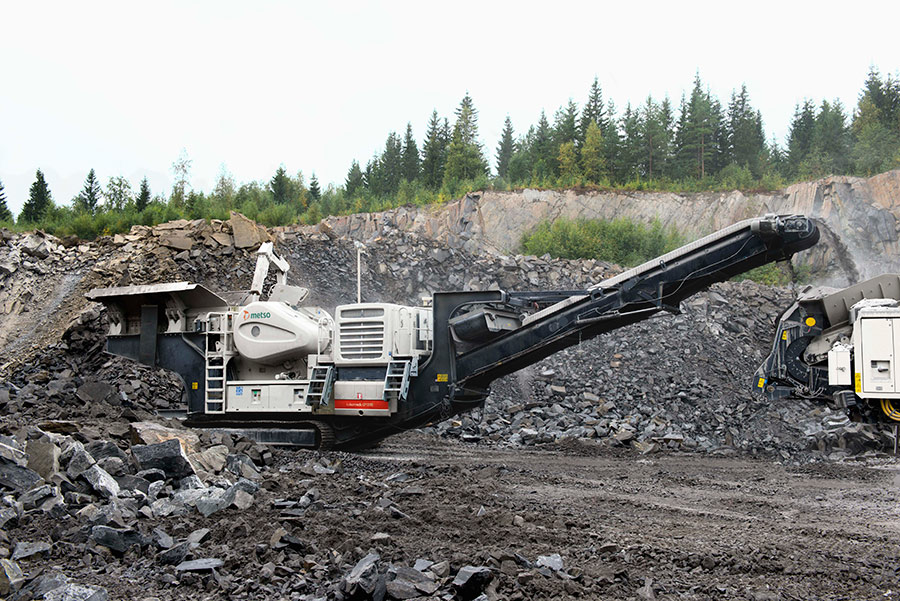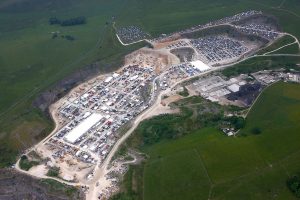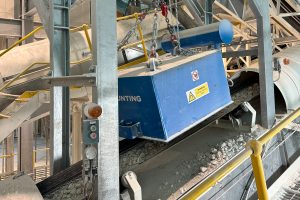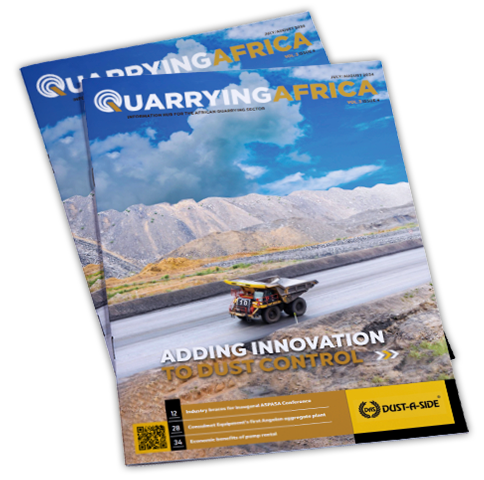Trends in capital equipment generally come from two separate places – market demands (customer needs) and innovation (continuous improvement by the OEM) – which is the case in the mobile crushing market, reasons Marais.
In line with customer demands, he says, trends such as the move towards bigger mobile crushing equipment and hybrid solutions have in recent years come to the fore in southern Africa. As part of the innovation imperative, telemetry solutions, such as Metso Outotec Metrics, continue to evolve, allowing customers to keep a finger on the pulse of their crushing operations.
Bigger is better
According to Marais, the move towards bigger crushing gear has taken root in southern Africa in the past three to four years. “One of the major drivers of this trend is the changing face of the contracting fraternity. Traditionally, contracts were long term, allowing contractors to mobilise their equipment for three to five years on a single site. The situation, however, has changed in the past few years, with contracts becoming much smaller and shorter,” he says.
To operate profitably in such an uncertain business environment, contractors are therefore turning to bigger mobile crushing equipment such as the Lokotrack LT120 jaw crusher and the Lokotrack LT300HP cone crusher to allow them to execute the fewer jobs more speedily. This allows them to increase the volume of work that they can complete within a certain timeframe.
“Given the nomadic nature of such operations, opting for larger crushing equipment means that contractors are able to minimise the number of machines that they have to mobilise from one site to the other. Less kit is easy and cost-effective to move between sites,” he says.

Best of both worlds
Another key trend being driven by market demand is the growing popularity of dual-powered (hybrid) mobile crushing solutions. The trend, says Marais, is largely being driven by contractors operating in the commodity sector, where infrastructure is readily available.
Meaningful operational gains are realised when customers can connect hybrid machines to the grid. By and large, the price of electricity is lower than that of diesel, so there is a chance to reduce operating costs significantly.
“Being able to plug directly into the grid is a big cost-saving on diesel,” says Marais. “Having a direct power supply means that crushing plants can cut operational costs and ultimately improve the cost per tonne of end products. Contractors running these units have seen massive fuel economy benefits and are insistent on procuring more hybrid units.”
A case in point is a major contractor already running a total of five Lokotrack E-models, namely two LT120e jaw crushers, an LT330D mobile cone crusher and three ST2.8E mobile scalping screens. Having realised a 30% saving on its hybrid jaws compared with the conventional diesel counterparts, the contractor is converting its entire fleet to hybrid units.
“The customer is operating on a mine where there is mains electricity infrastructure to support economic operation of the hybrid units. As a result of the massive cost benefits, the company is due to expand its hybrid crusher fleet with two more units – a Lokotrack LT120e and LT106e,” explains Marais.

The rise of telematics
As part of the innovation imperative, telematics technology is developing at a rapid pace. The use of telematics provides OEMs with a platform to communicate and collaborate with their distributors and customers alike, using machine data to improve productivity, drive efficiencies and reduce downtime, thus maximising financial gains and return on investment for the customer.
In a low-growth environment, quarry operators are therefore increasingly looking for ways to increase efficiencies while reducing costs. With data being the new currency for crushing and screening businesses, telematics and the real-time usage of data is quickly moving from being optional to being a requirement and is becoming an invaluable tool to gain a competitive edge and remain one step ahead in tough economic times.
“The amount of data available to the customer from the field is much larger than it has ever been before,” says Marais. “Telematics are therefore playing an increasingly significant role in crushing operations over the past several years, as OEMs such as Metso Outotec continue to advance their existing systems.”
As part of its continuous improvement process, Metso Outotec has recently launched an upgraded version of its Metrics, an innovative cloud-based tool for real-time monitoring for Lokotrack mobile crushers and screens.
“The new system moves from the traditional satellite feed to a GSM signal infrastructure. The new remote monitoring solution brings significantly better connectivity and optimisation benefits to customers’ crushing processes. Other features include CO2 tracking for sustainability benefits, 24/7 access to real-time data, a maintenance module, and critical dashboards for utilisation and geolocation,” says Marais.
Furthermore, the new Metrics allows remote troubleshooting and the user interface can be tailored to address different customer needs. New features and functions can also be updated remotely.
“In recent years, we have seen increased interest in telematics technology, particularly from larger, sophisticated contractors who are looking to refine their operations. It’s those type of customers who want to know every detail of their operations, including plant availability, performance, reliability and profitability, who find value in this technology,” says Marais.

The future
Another trend that has not really taken root yet but is being spoken about in factory corridors is the idea of modular mobile solutions. This is something Marais expects to see in the near future.
“It’s not available yet, but in the next few years we expect to see a single chassis platform being used for three or even four different mobile crushers, with interchangeable components. This will offer customers greater versatility, allowing them to chop and change components such as crushers, feeders and discharge belts, as they wish, to create different types of machines on a single chassis platform,” he says.
State of market
Commenting on the state of the market, Marais tells Quarrying Africa that while the South African construction sector is still very much under pressure, he is encouraged by several SANRAL road projects that have come to market. A case in point is the recent awarding of four major construction tenders in KwaZulu-Natal and the Eastern Cape worth a total of R7-billion.
“This is a welcome boost for an industry that has been in dire straits for almost a decade. However, these contracts have not necessarily translated into meaningful business for us from a capital sales perspective. In fact, the South African market remains under pressure from a supply chain point of view,” he says.
However, Pilot Crushtec has seen massive growth in the rest of southern Africa in the past year. Countries such as Zimbabwe, Zambia and the DRC, among others, have shown the desire to invest in infrastructure projects, says Marais.
“We have shipped a few mobiles to some of our existing customers in these countries. Unlike in South Africa where we have not sold a single fixed plant in the past three years, we have supplied four greenfield modular plants in southern Africa in the past six months. It is encouraging to see that the majority of our sales growth in these countries is coming from greenfield quarry and aggregate crushing projects,” concludes Marais.





![Data from the World Risk Poll shows that one in five (21%) people in mining and quarrying occupations have experienced harm at work in the past two years. [Photo by Shane McLendon on Unsplash]](https://quarryingafrica.com/wp-content/uploads/2024/10/shane-mclendon-89hUOLtVfoI-unsplash-300x225.jpg)
